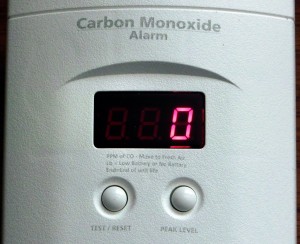By The Metric Maven
Bulldog Edition
You’re eighteen hands at the shoulder
— Heavy Horses by Jethro Tull
John Bemelmans Marciano (JBM) often laments what might be lost aesthetically if we were to switch to the metric system. In his ill-titled book Whatever Happened To The Metric System? he discusses his “family business”:
Our family business was horses, Like any insular community, the horse world comes with its own specialized vocabulary, but it is particular in preserving so many dialectical relics. Riding pants are called “britches,” an old variant of “breeches,” a fashion that began to disappear when it became a symbol of aristocrats during the French Revolution. …
***
The terminology of horses also includes a couple of otherwise obsolete but once widely used measures, the furlong and the hand. Races under a mile are held in furlongs, of which there are eight to a mile, while the height of horses is measured in four inch hands. The cutoff between a horse and a pony comes at 14.2 hands (which is not fourteen and two tenths but fourteen and a half) as measured to the withers. These terms are the only ones used; to call a six-furlong race three quarters of a mile would sound odd, and to say a pony has to be four feet ten inches tall or shorter absolutely ridiculous.
For me, the hand and furlong were measures that meant something, and I could visualize them in a way I couldn’t a kilometer or anything else metric, save liters of soda. Not that I thought much about the metric system after I finished school. At least not until I had to.
It is interesting that when JBM mentions a metric measure to which he can relate, in this case the liter, it is a metric measure that is ubiquitous in the U.S.. He then divulges that for him, the height of horses only has meaning when presented in hands, and again is a unit with which he is personally familiar, but is arcane to the majority of the U.S. public.
The measurement of horses using hands involves entry into the world of the sport of kings, which most of us plebeians have not experienced. A childhood friend had a considerable number of horses, and we would ride them during the Summer for short periods. He showed me how to saddle a horse, and make sure the girth used was held tight until the horse exhaled, or the saddle could slip. I do not recall him mentioning horse heights in hands. Of course this was a common Midwestern farm, and he was not breeding horses for races run in furlongs. There were horses on my cousin Ralph’s farm, and I don’t recall him once describing their height in hands. It was not as if I had not been around horses through my teenage years, I had. It is possible the height of horses in hands was mentioned, but I did not take notice.
The use of the hand to measure horses is rather esoteric. A “hand” is standardized to four inches. According to Wikipedia, the hand is used in Australia, Canada, the Republic of Ireland, the UK and the United States to measure horses. Apparently, only when the international inch was finally adopted, could the hand become a standard size. In other words it was not until the international inch was defined in terms of the metric system that this unit of kings had a single agreed-upon value. Despite the alleged “naturalness” of hands, elsewhere in the world horses are measured in metric units.
There are a number of websites that explain how to measure your horse in hands. JBM brought up the fact that the height above which a pony becomes a horse is 14.2 hands. The value 14.2 in hands is 14 hands with what appears to be a decimal point. It is NOT a decimal point, but is instead a separator between two types of units. The two units are hands and inches, and this linear quantity is written as hands.inches. But wait! there are only four inches to a hand, so the number after the separator point is never four or above. One hand is four inches or 1.0 and two and one half hands are 2.2, so obviously 14.3 hands is 59 inches. According to one source, one can also add a fraction of an inch at the end. One can have a horse that is 14.2 1/2 HH where the HH stands for Hands High, or just H for hands, or in other cases hh and h lower case. So we have a measurement notation that uses what is generally interpreted as a decimal separator or radix instead as a units separator with the option of fractions tacked on at the end? This is the numerical wonder that JBM insists on preserving?!
Decimal notation never adds any of these complications. It is also standard throughout the world. The left side of the decimal point has each place multiplied by ten. We recognize 123. as 1 x 100 + 2 x 10 + 3 x 1. On the right hand side the downward decrease by ten continues without discontinuity. The number .456 is 4/10 + 5/100 + 6/1000. The total number 123.456 has but one rule of interpretation and attaches to it only one type of unit.
Perhaps I’m reading too much into John Bemelmans Marciano’s embracing of the hand as a meaningful unit. Perhaps it is only a unit created so that he can segregate himself from other tribal groups. The way the hand unit is used appears to be a numerical form of argot. Wikipedia defines argot as:
An argot is a secret language used by various groups—e.g. schoolmates, outlaws, colleagues, among many others—to prevent outsiders from understanding their conversations.
The purpose of an argot is not to facilitate communication, but to restrict it to an “in group.” A classic example would be the CB radio argot of the 1970s in which truck driver’s referred to a Volkswagen Beetle as a “pregnant rollerskate.” One reason for the implementation of the metric system was to eliminate argot, and the graft that accompanies it, with a universally understood measurement system.
John Bemelmans Marciano sees the metric system as inhuman and sterile, he celebrates his equine argot as something with a deep rich meaning. JBM believes he should be left alone to pursue his furtive world of aristocratic-hipster measures. His constant eagerness to tie the metric system to the horrors of the French Revolution, and his insistence on patrician equine argot, points toward a desire to simply preserve elitism. In his book, Marciano seems to say: “I’m just like Neal Cassady, but I see the world like Thurston Howell III.” With JBM, it is the dog that does not bark (measured in hands?) that is most interesting. That metaphorical dog is John Wilkins, the Englishman who first proposed the system part of the metric system. The ad nauseum guilt by association of the metric system with the French Revolution that JBM uses in his book, appears to be but a polemic device. Without it, JBM’s rickety “thesis” of the origins of the metric system during the French Revolution could not support itself for an attosecond. There is the Sport of Kings, and measurements designed for the common person, and they will remain segregated!
For just one moment, let’s look at the hand’s relation to metric quantities. A hand is four international inches or 101.6 millimeters. So one could create a “metric hand” that is exactly 100 millimeters. The value of 14 hands would be 1400 mm, and with another half of a metric hand we obtain 50 mm or 1450 mm. This is the height at which a horse and pony have their demarcation. It’s really simple to use millimeters, take the number of hands multiplied by 100 mm, or just add two zeros. Therefore 10 hands is a meter, 12 hands is 1200 mm. Marciano’s central argument that metric is not “natural” and “For me, the hand and furlong were measures that meant something, and I could visualize them in a way I couldn’t a kilometer or anything else metric” is ridiculous. Marciano shows an epic lack of familiarity with the metric system, despite finding a way to write a book with metric system in its title. JBM does not notice that the hand can be seen as a “stealth metric measure,” which is almost exactly commensurate with a direct value in millimeters! Apparently millimeters are quite natural.
We see that 14 and one-half metric hands is 1450 mm. If one told JBM that Big Jake, the world’s tallest horse, is 2102 mm, could he not immediately realize that Big Jake is essentially 21 hands tall! Is JBM’s real desire to preserve the hand as elitist equestrian demarcation? Preserving metrological argot promotes separation of the U.S. from a measurement system that has been embraced by 95% of the world’s population. Not one country has expressed interest in returning to pre-metric measures after converting to metric. When the entire world agrees on one measurement system, it reduces the opportunity for fraud. In my view, JBM’s celebration of the hand, is nothing but an elitist “bitch-slap” of ordinary humanity.
Related essays:
Whatever Happened to the Metric System?
If you liked this essay and wish to support the work of The Metric Maven, please visit his Patreon Page and contribute. Also purchase his books about the metric system:
The first book is titled: Our Crumbling Invisible Infrastructure. It is a succinct set of essays that explain why the absence of the metric system in the US is detrimental to our personal heath and our economy. These essays are separately available for free on my website, but the book has them all in one place in print. The book may be purchased from Amazon here.

The second book is titled The Dimensions of the Cosmos. It takes the metric prefixes from yotta to Yocto and uses each metric prefix to describe a metric world. The book has a considerable number of color images to compliment the prose. It has been receiving good reviews. I think would be a great reference for US science teachers. It has a considerable number of scientific factoids and anecdotes that I believe would be of considerable educational use. It is available from Amazon here.

The third book is called Death By A Thousand Cuts, A Secret History of the Metric System in The United States. This monograph explains how we have been unable to legally deal with weights and measures in the United States from George Washington, to our current day. This book is also available on Amazon here.








